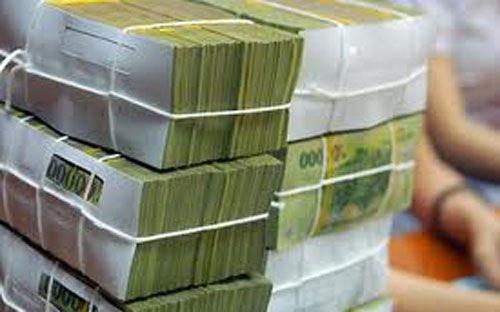Opinions split over budget deficit plan

illustration photo
The latest figures from the Ministry of Finance (MoF) show that total budget collections last year exceeded estimations by 0.7 per cent, or VND6 trillion ($285 million).
Early last year the National Assembly approved a budget deficit of 4.8 per cent of GDP, coming to VND162 trillion ($7.7 billion).
But later the MoF reported that budget collections would fall below estimations while most spending items could not be cut, and therefore has asked the NA to revise up the deficit to 5.3 per cent of GDP, or VND195 trillion ($9.28 billion).
The NA reportedly agreed in principle with the MoF’s proposal.
Despite new figures showing higher than estimated budget collections, the MoF is still pursuing approval for a deficit of 5.3 per cent of GDP.
About the proposal, Nguyen Ngoc Hoa, a member of the National Assembly Economic Committee said the legislature had granted in-principle approval to the MoF’s proposed 5.3 per cent deficit late last year because of its forecast of a drop in budget collections by VND25.2 trillion ($1.2 billion).
“But in fact the new figure of VND6 trillion ($285 million) more than expected means a 5.3 per cent deficit is unreasonable,” Hoa noted.
Hoa did advocate revising the deficit to above 4.8 per cent of GDP, but not as high as the 5.3 per cent the MoF has proposed.
“The MoF needs to diversify its capital sources, such as collecting dividends from SOEs, selling state capital through divestitures or equitising SOEs,” he argued.
Defending the 5.3 per cent deficit, Deputy Minister of Finance Do Hoang Anh Tuan said the state budget was to serve diverse practical needs, including supplementing the budget for realising policies to spur development of ethnic and mountainous areas, ensuring defense and security, and other urgent tasks.
“Setting the budget deficit can only be done by the National Assembly, but if it is set at below 5.3 per cent, some expenses will need to be revised down while in fact all of those on the list are essential,” Tuan explained.
In light of the sovereign debt management strategy for 2011-2020, approved by the prime minister via Decision 958/QD-TTg in July 2012, the deficit is slated to decrease gradually to around 4.5 per cent of GDP by 2015 (including government bonds) and would be kept at below 4 per cent from 2016-2020.
“If at present, the deficit, not including government bonds, has reached 5.3 per cent of GDP, so how is it possible to reach our target of 4.5 per cent by next year?” asked Deputy Chairman of the National Assembly’s Economic Committee Nguyen Van Phuc.
What the stars mean:
★ Poor ★ ★ Promising ★★★ Good ★★★★ Very good ★★★★★ Exceptional
Latest News
More News
- The promotion of ESG via banking (November 21, 2024 | 09:32)
- Standard Chartered committed to Vietnam’s financial success (November 21, 2024 | 09:24)
- Full ESG adoption the priority for Agribank (November 21, 2024 | 09:07)
- Banks entice youth with tech advances (November 21, 2024 | 08:00)
- ESG represents a shift towards sustainability for banks (November 20, 2024 | 13:00)
- GGGI supports Vietcombank’s debut of $80 million green bonds (November 20, 2024 | 11:20)
- SHB and the ESG journey: creating social value in every step (November 19, 2024 | 15:00)
- Banking sector contributes to ESG, green growth, and sustainable development (November 19, 2024 | 14:42)
- ESG implementation in banking: from awareness to action (November 19, 2024 | 12:08)
- VIR hosts 'ESG in Banking: Leading Through Implementation' conference (November 19, 2024 | 11:14)




















 Mobile Version
Mobile Version